photo credit: James Muggah
John Hughes Clarke and James Muggah
Ocean Mapping Group
Dept. Geodesy and Geomatics Engineering
University of New Brunswick
Nuliajuk 2013 Index
|
photo credit: James Muggah
|
Nuliajuk 2013
Instrumentation John Hughes Clarke and James Muggah Ocean Mapping Group Dept. Geodesy and Geomatics Engineering University of New Brunswick Nuliajuk 2013 Index |
Primary positioning is provided by the F-185 on COM1 (GGA, HDT, VTG, ZDA) at 1 HzSingle Beam: a 38 kHz Furuno FCV-30 is the standard fisheries echosounder on the Nuliajuk. It is capable of bottom tracking in excess of 1500m. It is a split beam system, and also capable of forming multiple simultaneous beams (up to 5) for fish school shape determination. For fisheries biomass, the full waveform of a single channel can be exported in the HAC format. No bottom tracking is maintained in the HAC format, however, (or heave or orientation). And when recording to an external disk (the internal disk is too small), it slows down the ping rate and often freezes the sonar for up to a minute at a time. Thus for this leg, full waveform logging was not used.
Attitude and orientation is provided by the F-185 on COM2 in EM1000 format at 100 Hz
Secondary positioning is provided by the C-Nav 3050 on COM2 in NMEA (GGA, VTG, ZDA) at 1 Hz
Timing is provided by the F-185 via ZDA and 1PPS (Falling Edge)

CNAV 2000: The output is recorded using a serial logger. The logged data is converted to Rinex format using a proprietary CNAV converter that must be run on 32-bit Windows. Files are split by the serial logger 24 hours from logging start.Positioning and Orientation:
CNAV 3050: Is the secondary positioning for EM3002 and provides RTCM correctors to F-185. Logged by C-Setup to a proprietary format. Can be converted to Rinex with C-Nav converter.
COM1: configured to output GGA, VTG, ZDA at 1 Hz, supplied to EM3002 as secondary positioning.
COM2: configured to output RTCM 9 correctors to the F-185
All 19 SV-T-S(derived) profiles obtained around SE Baffin Island and map showing locations of the SV profiles collected.
Lever Arms, Reference Frames:
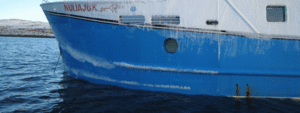 |
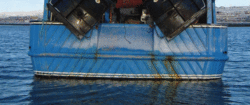 |
 |
| port side
waterline |
stern waterline |
stbd side water line |

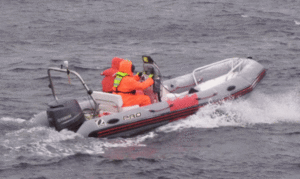 would be better with a cuddy... |
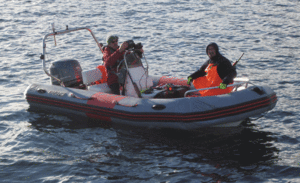 showing transceiver/display mounting |
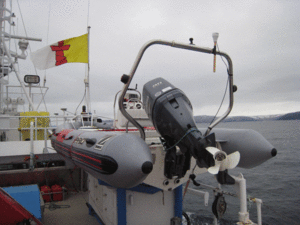 showing antenna and transducer transom setup. |
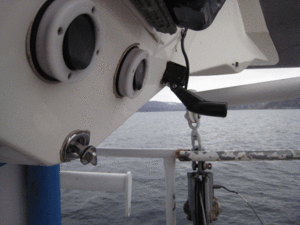 showing detail of transducer installation |
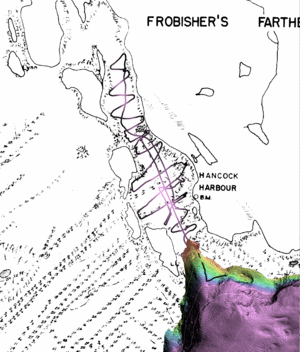
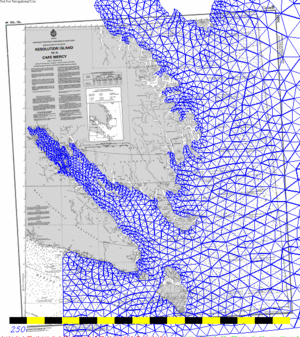 |
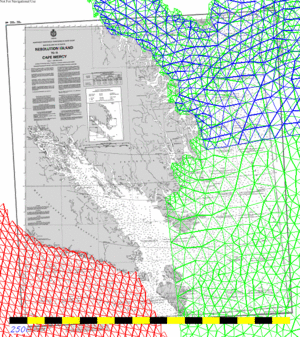 |
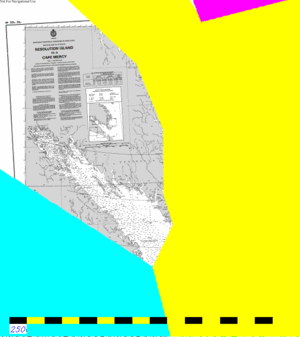 |
| Arctic9 model coverage |
Arctic8 model coverage (blue) NW Atlantic model (green) Hudson Bay model (red) |
Polygons defining default
model choice for ArcticNet surveys prior to 2012 |
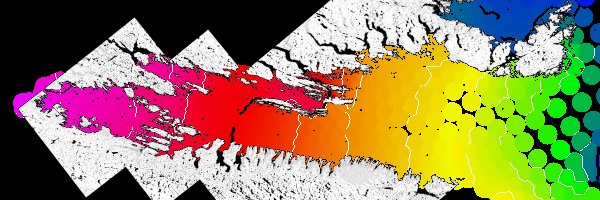 |
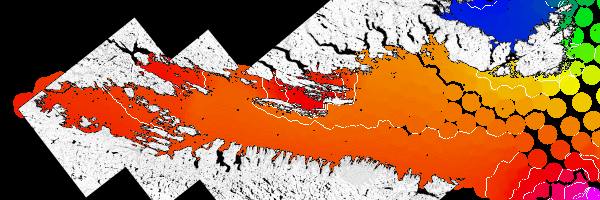 |
| M2 amplitude - white line 0.1m
contours, black line 1m contours. 3.4m amplitude at head, 2.5m at mouth |
M2 phase -range : -11 to -60
degrees (1 degree is roughly 2 minutes delay for an M2 tide) |